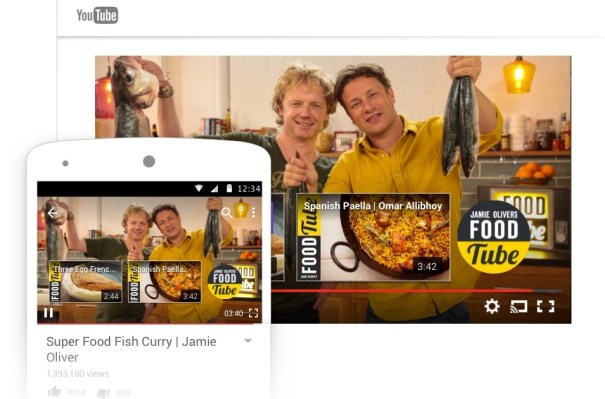YouTube today officially launched a new feature for video creators called End Screens, which are designed to keep users engaged with the YouTube app and creators’ content. The feature, which places thumbnails at the end of the video, can be used to prompt viewers to watch more of the creator’s videos when they finish watching the first one, or take other actions, like subscribing to the channels, visiting channels from fellow collaborators, and more.
The feature was already in testing with select creators ahead of this announcement, which now makes End Screens a feature any video publisher can use.
It’s also meant to serve as something of an upgrade to the older, desktop-only tool called Annotations. With Annotations, creators could make their own end screens of sorts, by manually adding clickable links to videos.
YouTube also last year introduced another means of moving away from Annotations, with the debut of “Cards.” These work a lot like End Screens, but can be displayed during the video playback.
However, for those who choose to migrate to End Screens, there will no longer be a need to use Annotations, YouTube explains in a blog post detailing the new feature. That’s because the End Screens are quicker to use and will reach users on both desktop and mobile.
According to YouTube’s documentation, End Screens can be incorporated anywhere within the last 5 to 20 seconds of a video, and can include up to four elements. In addition to promoting a creator’s own videos and encouraging users to subscribe, the feature can also point viewers to other videos, playlists, or channels on YouTube, or can be used to promote non-YouTube content, like websites, merchandise for sale, or crowdfunding campaigns.
When a user hovers over an End Screen on the desktop or taps on them on their mobile device, the End Screens will then expand to display more information.
In addition, when the End Screens display, other interactive content is suppressed, like card teasers, featured content and branding watermarks.
YouTube says it may also skip showing the End Screen when the video is playing in the background, or it may relocate where the screens appear when shown on smaller screens.
Creators can track their End Screens’ performance, as well, in the YouTube Analytics section of Creator Studio.
While for creators, the goal, of course, is to point viewers to useful resources or self-promote. But for YouTube overall, End Screens could help to increase mobile users’ time in the app.
Already, YouTube is one of the top apps on users’ smartphones, and in particular sees heavy traction among younger users and millennials.
In fact, a comScore study (commissioned by Google), released earlier this summer found that millennials are more likely to binge-watch digital video than older viewers. 37 percent of millennials said they binge-watched daily, while only 14 percent of those 35 or older did the same, for example. Combined with End Screens’ mobile support, the ability to recirculate these viewers through YouTube in a single session could help to increase YouTube’s engagement and retention metrics as a whole.
